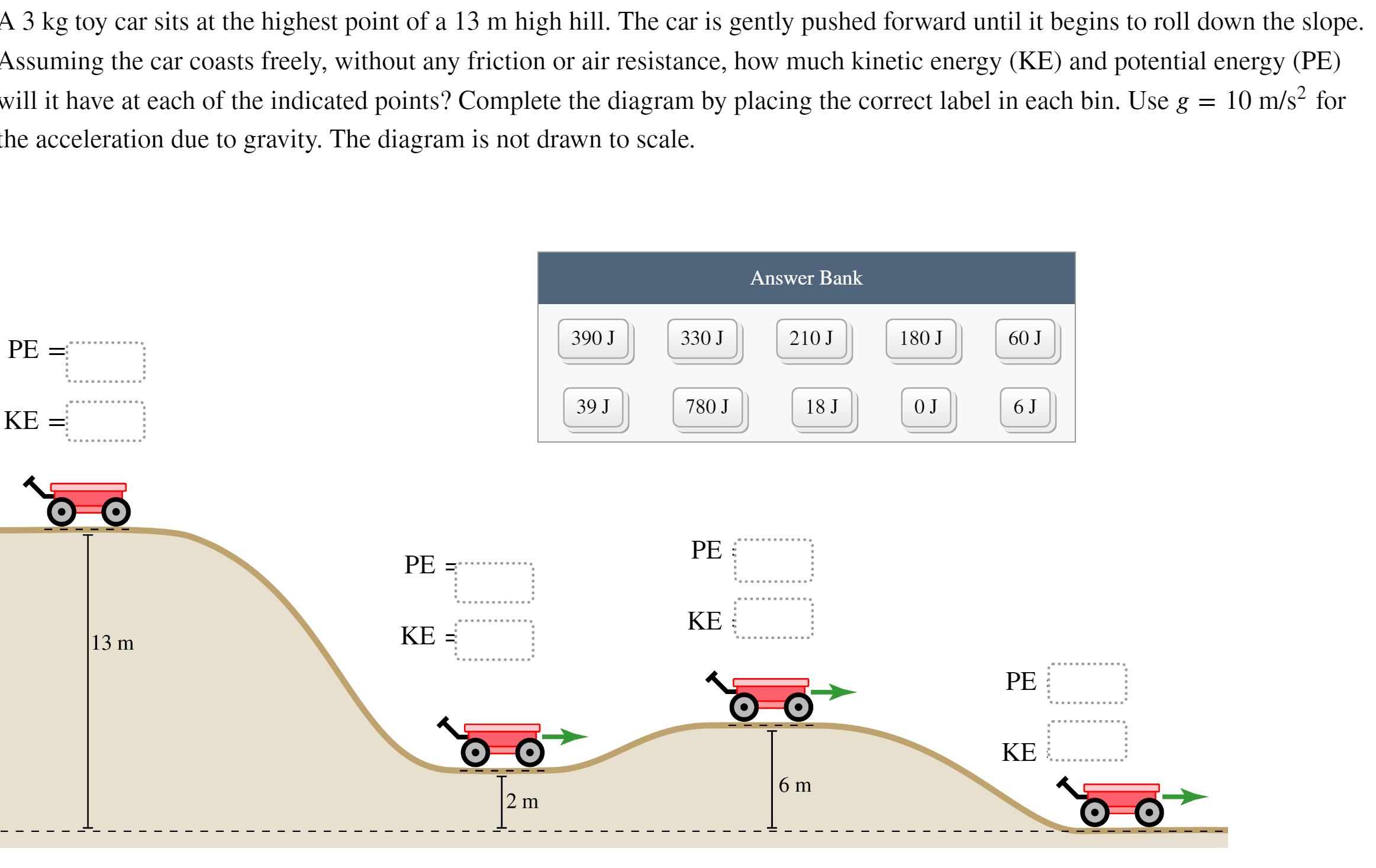A 3 kg toy car sits at the highest point of a 13 m high hill. The car is gently pushed forward until it begins to roll down the slope. Assuming the car coasts freely, without any friction or air resistance, how much kinetic energy (KE) and potential energy (PE) will it have at each of the indicated points? Complete the diagram by placing the correct label in each bin. Use g = 10 m/s2 for he acceleration due to gravity. The diagram is not drawn to scale.
